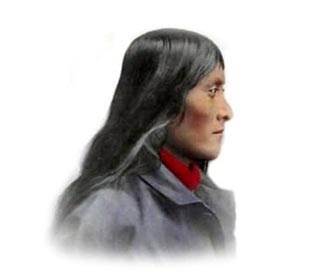Fast Facts about the History of New Mexico Indians
The climate, land, history, environment and natural resources that were available to the indigenous Indian tribes in New Mexico resulted in the adoption of the Southwest culture and some adopted the Great Plains Indians culture. - Name of State: New Mexico
- Meaning of State name: Name of an Aztec god, “Meritili.”
- Geography, Environment and Characteristics of the State of New Mexico: Plains, Rocky mountains and high plateau
- Culture adopted by New Mexico Indians: Southwest Cultural Group and some adopted the Great Plains culture
- Languages: Southern Athabaskan (Apachean) language
- Way of Life (Lifestyle): Farmers and some Nomadic hunters
- Types of housing, homes or shelters: Farmers lived in Adobe (pueblo) houses. Hunters lived in Hogans
History Timeline of the New Mexico Indians - 10,000 B.C.: Paleo-Indian Era (Stone Age culture) the earliest human inhabitants of America who lived in caves and were Nomadic hunters of large game including the Great Mammoth and giant bison.
- 9000 BC: Clovis Culture (named after artefacts found at Clovis, New Mexico. These people used a distinctive type of fluted arrow point
- 7500 BC: Folsom Culture (named after artefacts found at Folsom, New Mexico. These people used flint arrow point in the shape of a leaf)
- 7000 BC: Archaic Period in which people built basic shelters and made stone weapons and stone tools
- 2000 BC: Pecos Culture begins with changes in architecture, art and pottery for the people who lived in a semi-arid environment
- 1540: The Tiguex War was the first war between Europeans and Native American Indians. The battles were fought by the army of Francisco Vasquez de Coronado against the Tiwa Indians in New Mexico
- 1680: 1680-1692: The Pueblo Revolt was located in New Mexico and Arizona between the Native Americans and the Spanish. This was an initial great victory for the Pueblo but the Spanish re-conquered the lands in 1692
- 1775: 1775 - 1783 - The American Revolution.
- 1776: July 4, 1776 - United States Declaration of Independence
- 1803: The United States bought the Louisiana Territory from France for 15 million dollars for the land
- 1812: 1812 - 1815: The War of 1812 between U.S. and Great Britain, ended in a stalemate but confirmed America's Independence
- 1830: Indian Removal Act
- 1832: Department of Indian Affairs established
- 1849: Apache Wars (1849–1924)
- 1849: The Jicarilla War fought between the Jicarilla Apaches and Ute warriors against the United States
- 1858: Navajo Wars in New Mexico (1858–1864)
- 1860: Navajo expedition, New Mexico in which 1,000 warriors waged an attack on Fort Defiance.
- 1861: 1861 - 1900 Apache Wars in Arizona, New Mexico and Texas. Leaving the reservation attacks were made on outposts led by Geronimo and Cochise. Geronimo surrendered in 1886 but others carried on the fight until 1900
- 1861: 1861 - 1865: The American Civil War.
- 1862: U.S. Congress passes Homestead Act opening the Great Plains to settlers
- 1865: The surrender of Robert E. Lee on April 9 1865 signalled the end of the Confederacy
- 1873: Campaign against Apache Indians in Arizona and New Mexico
- 1887: Dawes General Allotment Act passed by Congress leads to the break up of the large Indian Reservations and the sale of Indian lands to white settlers
- 1893: Navajo war against white settlers. Northwestern New Mexico and Northeastern Arizona
- 1969: All Indians declared citizens of U.S.
- 1979: American Indian Religious Freedom Act was passed
|
